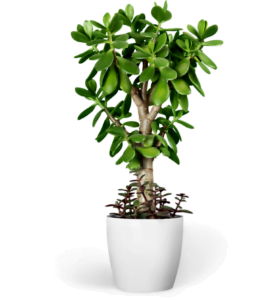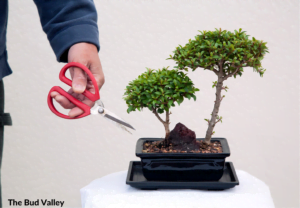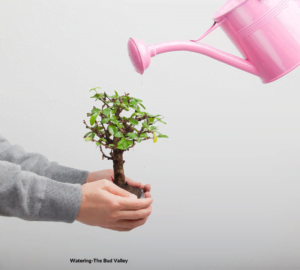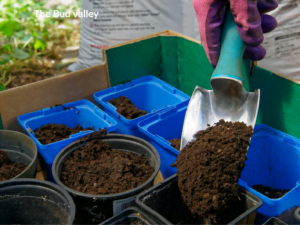About bonsai tree

Michael Funk, president of Jackson & Perkins, states that the bonsai tree is an ancient tree that originated in China almost a millennium ago. We all know that the bonsai tree looks very small, but compared to other plants, this tree seems huge. Although bonsai trees can be put beautifully inside a home, they are not small by nature genetically. It is trimmed from an early age to maintain its modest stature and to provide it a variety of shapes. Its normal growth is stunted by the various pruning procedures used, and its lifespan is limited to that of well-maintained plants and frequent pruning. Many people plant bonsai trees and take proper care of them, but still, the tree does not live long or die after a few days. The main reason is that you must first know for sure whether the tree you are keeping indoors or in your house is an indoor plant or an outdoor plant. If the indoor plant is not suitable for indoor conditions, this tree will surely die. So you must be 100% sure that the plant is an indoor plant that you can keep in your house, and the plant that is an outdoor plant must be planted in your garden or outside the house; then this plant will never die, i.e., the chance of dying will decrease by 90% to 95%.
Successful Bonsai Tree Care

In this blog today, I will present all the detailed information about the bonsai tree from my personal experience because I have been caring for this tree for a long time.I have had between 12 and 15 bonsai trees since 2016 that I take good care of on a regular basis. I will be selling these plants in a few days, and they are still alive. I can provide you the right instructions to follow for the proper upkeep and care of your bonsai plants based on my extensive knowledge with these species.
Watering

Watering the plants is very important; without water, no plant can survive for a long time. Also, bonsai plants need water, but different species of plants need water at different times. Some plants need more water, and some plants need less water, so make sure first. If you think that you will water your plants every day according to the species of plants you have planted in your home, i.e., a routine, then it will be 100% wrong. Because not all plants require the same amount of water, check the soil at the base of the plant before watering. Water the plant if the soil appears dry, that is, if you can feel no water in the soil or if the earth has grown extremely hard to the touch. Again, excess water should never be provided to the plant because if excess water is provided, the roots of the plant may rot, and the plant may be damaged. So, watering should be done properly. This does not cause any problems to my plants.
Fertilizing

It is a well-established fact that plants require fertilizers, and it is always best to treat them sparingly because overfertilization can lead to plant death. In the spring through summer, or once every six weeks if you see that your plant is becoming duller or growing abnormally, you can apply liquid fertilizer. If it is progressively turning yellow, you need to apply fertilizer in prescribed doses.
Repotting
Repotting bonsai trees is crucial since it prevents the tree from growing normally otherwise. However, there is a certain period for repotting. If repotting is done too frequently, the tree may die when it is young. It is recommended to report after two years for young trees, but for mature trees, it is much better to report every three to five years. Things to check and consider before repotting include examining the roots of the tree in early spring and deciding when the root system is becoming crowded.
Light

Generally, every plant needs sunlight; most plants require more sunlight, while some can thrive with less. Bonsai plants, however, need sunlight. Sunlight is essential, therefore if you want to keep a bonsai tree indoors, you need to choose a spot that receives enough sunlight to give the plant ten hours or more a day. Regular exposure to sunlight will allow the plant to grow and flourish. But without regular exposure to sunshine, the plant will eventually lose its shine and its leaves will turn yellow, which will ultimately cause the plant to die. Therefore, sunlight is essential for plants.
Soil

For this plant, choosing the right soil is essential because improper soil selection will prevent the plant from absorbing enough vitamins and nutrients, which would hinder its growth. If you choose nutrient-rich soil and add all the necessary organic fertilizers to it before planting the plant, it will surely thrive and grow well in that soil. I chose the wrong soil when I originally planted this plant in 2016, which had an impact on my plants’ ability to flourish. The plants flourished after I altered the soil, and they have remained in my collection to this day.
Humidity
Maintaining high humidity levels when caring for a bonsai plant inside is one of the key concerns. High humidity is necessary for this plant, which could be challenging to provide at home. However, you can increase the humidity around your bonsai plant, especially by using a humidifier. In addition, you can put your plant next to a window so it can absorb moisture from the surrounding air if you don’t have a humidifier.
In conclusion, you should now be fully aware of how to maintain a bonsai tree if you have attentively studied the material above. With careful attention to these guidelines, your bonsai tree will undoubtedly develop healthily and in the right way. Since 2016, I have been taking care of my plants using this way, and if you follow suit and your plants grow well, mine will too. I can thus state with confidence that you should take my advice and that taking good care of your tree will pay off greatly.

